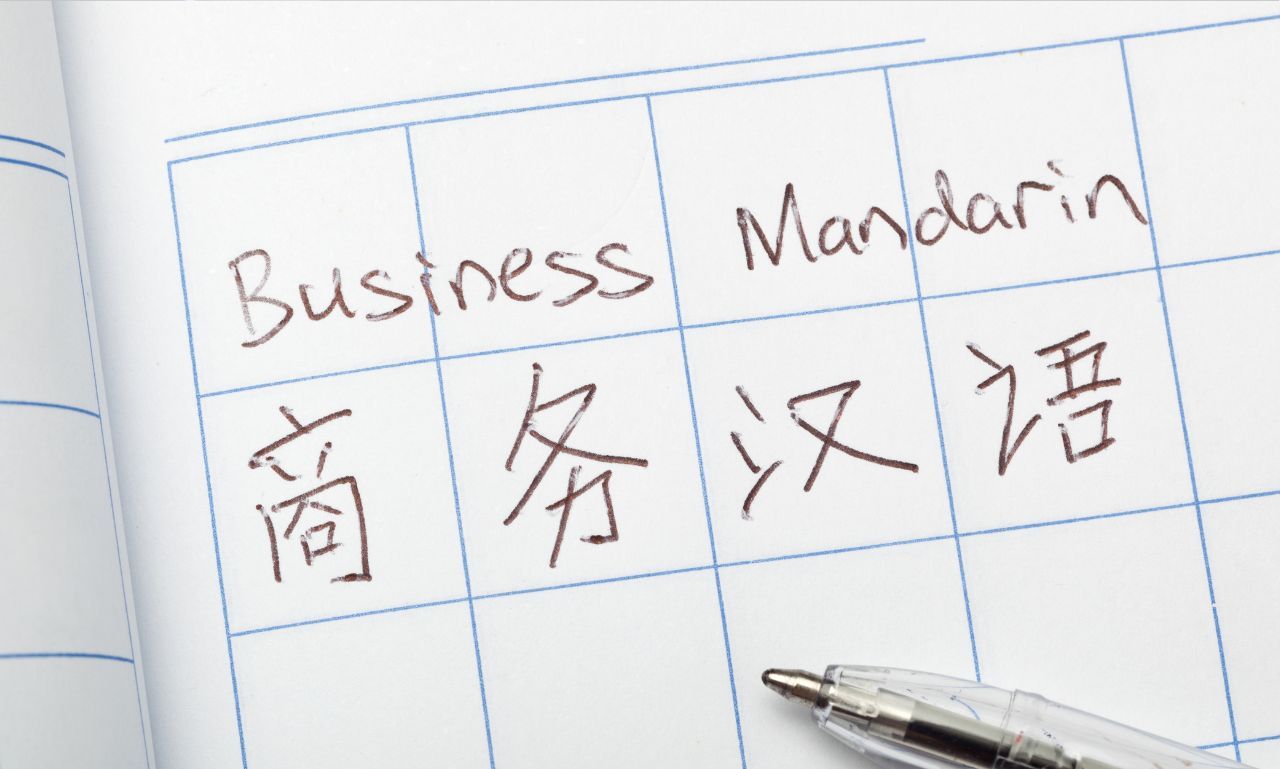So, you want to learn an Asian language, but you're not sure which one will be easiest to pick up? Choosing the right language is like finding the perfect pair of shoes; it should be comfortable, fit well, and give you confidence as you step into something new. Here, we'll explore the factors that make some Asian languages easier for English speakers to learn.
What are the Factors to Consider in Language Learning
Pronunciation
Pronunciation is often the make-or-break factor when it comes to learning a language. Some Asian languages, like Mandarin and Thai, are tonal languages, meaning that a single word can have multiple meanings based solely on pitch. For English speakers, mastering a tonal language can feel like walking a tightrope. On the other hand, languages like Malay and Indonesian have consistent pronunciation—each letter, much like in Spanish, is always pronounced the same way. This makes it a logical choice for those looking for an easier starting point.
Things to consider in pronunciation ease:
- Tonal vs. non-tonal: Tonal languages, like Mandarin, can be challenging.
- Consistency: Languages with straightforward pronunciation rules are generally easier.
- Ease of sounds: If the sounds exist in your native language, you'll have an easier time.
Vocabulary

Some Asian languages share a lot of vocabulary with English or have borrowed words from European languages. For instance, Tagalog and Indonesian have many borrowed terms from Spanish and Dutch, which can be helpful for English and Spanish speakers.
Tips on Vocabulary Learning:
- Look for cognates (words that sound similar to English).
- Some languages share basic vocabulary, which makes it easier for beginners to start conversations about everyday objects.
- Focus on languages that come from an Austronesian language family if you want more familiar vocabulary.
Grammar
Grammar can be a headache, but some Asian languages have straightforward grammar structures. Indonesian, for instance, has simple grammar, with no complex verb conjugations, noun genders, or grammatical rules that would make you want to pull your hair out. Malay and Tagalog also have relatively straightforward grammar rules compared to the intricate grammar structures of Japanese and Chinese.
Easier Grammar Characteristics:
- No verb conjugations: Malay and Indonesian are your friends here.
- No gendered nouns: Unlike French, some Asian languages keep it simple.
- Familiar sentence structures: If the grammar follows a subject-verb-object structure, it'll be more intuitive.
Influence of Native Language
The ease of learning any language depends largely on your native language. If your native tongue is English, you'll probably struggle with tonal languages, but find languages that use the Latin alphabet—like Malay and Indonesian—that are easier to grasp. If you're a Spanish speaker, you might find Tagalog somewhat easier, given the shared vocabulary from colonial history.
Key Influences:
- Native language proximity: The closer the grammar or vocabulary is to your native language, the easier it will be.
- Shared alphabet: The Latin alphabet is a huge plus if you're coming from a Western language background.
What are the Top Easiest Asian Languages
Indonesian
Indonesian often tops the list of the easiest Asian languages to learn, and for a good reason. Bahasa Indonesia uses the Latin alphabet, which makes reading and writing far simpler for those accustomed to European languages. The grammar is straightforward—no complex verb conjugations or noun genders—making it an excellent starting point for English speakers.
Why Indonesian is Easy:
- Simple grammar rules: No gendered nouns, no complicated verb tenses.
- Consistent pronunciation: Words are pronounced exactly how they're spelt.
- Vocabulary: Many words are borrowed from Dutch, making it accessible for European language speakers.
Malay
Malay, or Bahasa Melayu, is very similar to Indonesian. The differences are mostly regional and involve slight variations in vocabulary. The grammar is similarly uncomplicated, and the pronunciation rules are consistent. If you are wondering what is the easiest Asian language to learn and considering Southeast Asia, Malay is a great option.
Reasons to Choose Malay:
- Shared features with Indonesian: If you learn one, you'll understand the other to a large extent.
- Easy structure: Like Indonesian, there are no gendered nouns or complex conjugations.
- Useful in Southeast Asia: Spoken widely in Malaysia and Brunei.
Tagalog
Tagalog (Filipino) is another relatively easy language to learn, especially if you already know some Spanish. Many Tagalog words are borrowed from Spanish, and the language uses the Latin alphabet, which makes reading much easier. While the grammar might be more challenging than Malay or Indonesian, it's still manageable for beginners.
Tagalog Highlights:
- Spanish influence: Useful for those with knowledge of Romance languages.
- Pronunciation: Fairly consistent, although some sounds may be new to English speakers.
- Widely spoken: Tagalog is the basis of Filipino, the national language of the Philippines.
What are the Hardest Asian Languages to Learn?
Mandarin

Mandarin is often cited as one of the hardest languages to learn, especially for English speakers. The tonal nature of the language means that each word's meaning can change based on pitch, and the writing system—Chinese characters with thousands of variations—adds an extra layer of difficulty. However, the grammar is relatively straightforward compared to many European languages.
Challenges with Mandarin:
- Tonal pronunciation: A significant challenge if you're unfamiliar with tonal languages.
- Chinese characters: Requires memorizing complex characters.
- Grammar simplicity: While grammar rules are simple, tones and characters make it challenging.
Japanese
Japanese isn't tonal, which makes pronunciation easier for English speakers. However, it features three writing systems—Hiragana, Katakana, and Kanji—which can be overwhelming. The grammar is also more complex, involving various levels of politeness, different verb conjugations, and Kanji characters borrowed from Chinese.
Challenges with Japanese:
- Complex grammar: Different levels of politeness and verb forms.
- Writing systems: Learning Kanji is equivalent to learning thousands of characters.
- Pronunciation: Not tonal, but the grammar makes up for it in complexity.
What are the Cultural Contexts in Language Learning
Importance of Cultural Understanding
Learning a language isn't just about words and grammar—it's about culture. Understanding the cultural nuances can help you learn faster and more effectively. For instance, learning about Indonesian or Malay culture will make the vocabulary and context make more sense, making the learning process smoother and more immersive.
Cultural Importance in Language Learning:
- Contextual vocabulary: Cultural immersion helps in understanding idiomatic expressions and common phrases.
- Nuanced understanding: Learning about food, customs, and everyday life in a country enriches your language experience.
- Cultural exchange: Engaging with native speakers and immersing yourself in local traditions makes language learning a rewarding experience.
Access to Learning Resources
Effective Learning Methods
Language Apps and Online Courses

Language apps like Duolingo, Babbel, and Rosetta Stone can be extremely helpful in learning Asian languages like Indonesian, Malay, and Tagalog. These apps provide interactive lessons that focus on pronunciation, vocabulary, and grammar, often making the process fun and engaging.
Benefits of Language Apps:
- Interactive and fun: Gamification keeps you motivated.
- Accessible content: Many apps offer lessons tailored for different levels, from beginner to advanced.
- Self-paced learning: Great for fitting lessons into a busy schedule.
Immersive Learning Experiences
One of the best ways to learn a language is through immersion—whether by visiting a country where the language is spoken or consuming media in that language. Watching Indonesian movies, listening to Filipino music, or interacting with native speakers online can give you a deeper understanding of the language.
Ways to Immerse Yourself:
- Travel: Experience the language firsthand by visiting countries like Indonesia or the Philippines.
- Media consumption: Movies, music, podcasts, and news in your target language.
- Practice with natives: Online communities and language exchange programs are a great way to get real conversational practice.
How to Set Personal Goals for Language Acquisition?
Career Advancement
Learning an Asian language can open up opportunities in international trade, tourism, and multinational corporations. Indonesian, for example, is a valuable language in Southeast Asia, especially for those interested in business and cultural exchange in the largest continent.
Cultural Enrichment
Knowing an Asian language enriches your travel experiences and provides a deeper understanding of cultures that are very different from those in Europe or the Americas. This cultural knowledge can lead to a greater appreciation of traditions, food, and everyday life in Southeast Asia.
Conclusion
Indonesian or Malay would be the most accessible options if you are an English speaker. This will be due to their grammar simplicity, consistent pronunciation, and use of the Latin alphabet. Tagalog can also be relatively easy, especially for those familiar with Spanish. Setting realistic goals, immersion in the language, and motivation with the help of cultural understanding will hold the key to effective language learning.
Why These Languages Are Easier:
- Indonesian and Malay: Easy grammar, no complex verb conjugations, Latin alphabet, and consistent pronunciation.
- Tagalog: Familiar vocabulary for Spanish speakers, no tonal pronunciation, and a relatively straightforward grammar structure.
- Shared Features: All these languages are from Southeast Asia, are non-tonal, and have simple grammatical rules compared to other Asian languages.




